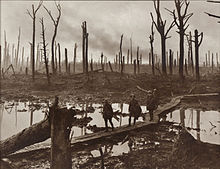
Australian Light Horse were mounted troops with characteristics of both cavalry and mounted infantry, who served in the Second Boer War and World War I. During the inter-war years, a number of regiments were raised as part of Australia's part-time military force. These units were gradually mechanised either before or during World War II, although only a small number undertook operational service during the war. A number of Australian light horse units are still in existence today.

The First Australian Imperial Force was the main expeditionary force of the Australian Army during the First World War. It was formed as the Australian Imperial Force (AIF) following Britain's declaration of war on Germany on 15 August 1914, with an initial strength of one infantry division and one light horse brigade. The infantry division subsequently fought at Gallipoli between April and December 1915, with a newly raised second division, as well as three light horse brigades, reinforcing the committed units.
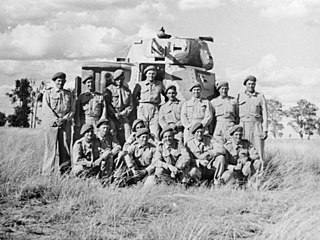
Armoured units made a relatively small, but important, contribution to Australia’s war effort during World War II. While Australia formed three armoured divisions and two independent armoured brigades during the war, Australian armoured units only saw action as independent regiments and companies supporting larger infantry formations. Early actions were fought in the Middle East by the divisional carrier regiments that supported the 6th, 7th and 9th Divisions, fighting in Libya, Egypt and Syria in 1941–42, before the Australian divisions returned to Australia in 1942–43. During the early fighting in the Pacific, there was a limited role for armoured formations, although one armoured regiment – the 2/6th – took part in the fighting around Buna–Gona in late 1942. Later in the war, though, during the Huon Peninsula, Bougainville and Borneo campaigns of 1943–45, several armoured units were used by Australian forces in the infantry support role.

The Jervois-Scratchley reports of 1877 concerned the defences of the Australian colonies, and influenced defence policy into the twentieth century.
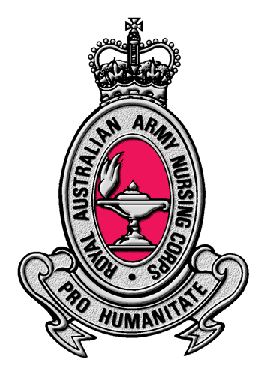
The Royal Australian Army Nursing Corps (RAANC) is a Administrative Corps of the Australian Army. It was formed in February 1951 from the Royal Australian Army Nursing Service. A Corps Badge was introduced in 1951 with the motto Pro Humanitate. It embraces the values of compassion and service to others, reflecting the care and dedication provided to the wounded and sick. Approval for the Corps flag was granted on 7 February 1958.
The Royal Australian Army Service Corps (RAASC) was a corps within the Australian Army. Formed on 1 July 1903, in the aftermath of the Federation of Australia, it was initially known as the Australian Army Service Corps (AASC) and subsumed the functions that had been undertaken by various organisations within the colonial forces. In 1948, the Royal prefix was bestowed upon the corps. The corps served in World War I, World War II, as part of the British Commonwealth Occupation Force in Japan, Korean War, Malayan Emergency and the Vietnam War. The RAASC was disbanded on 31 May 1973.

The Ordnance QF 25-pounder Short was an Australian variant of the British Ordnance QF 25-pounder field gun/howitzer. The gun was developed by modifying the 25-pounder's design to improve its mobility during jungle warfare. Development began in 1942, and the weapon first entered service with the Australian Army the next year. It was used by several Royal Australian Artillery regiments during fighting in the South West Pacific Area, before being declared obsolete in 1946.
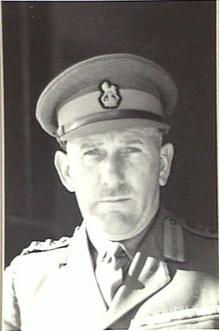
Lieutenant General Sir William Bridgeford, was a senior officer in the Australian Army. He began his military career in 1913 and fought on the Western Front during the First World War, before rising to command the 3rd Infantry Division during the Bougainville campaign in the Second World War. Later he served as the Commander in Chief of British Commonwealth Forces Korea during the Korean War. He retired from the military in 1953 and worked on the organising committee of the 1956 Melbourne Olympic Games, as well as being the director of several companies and treasurer of a returned services organisation.
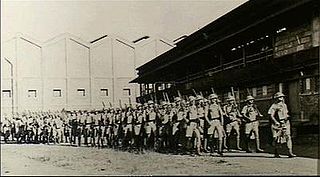
The Darwin Mobile Force was a mixed force of infantry and artillery raised by the Australian Army prior to the Second World War. It was the first regular infantry field force in the Australian military, although due to legislative restrictions that existed at the time it was established as part of the Royal Australian Artillery. Its formation marked a rare departure from the traditional Australian focus upon part-time citizen forces and is arguably a key moment in the development of a professional standing army. Attached to the 7th Military District, the Darwin Mobile Force were used to garrison the strategic port of Darwin in the Northern Territory, along with 9th Heavy Battery and the 7th Fortress Engineers, RAE, and to provide personnel with training and command experience. The force ceased to exist in August 1940 when its personnel were broken up and sent to other units.


The Australian Army was the largest service in the Australian military during World War I. The First Australian Imperial Force (AIF) was the Army's main expeditionary force and was formed from 15 August 1914 with an initial strength of 20,000 men, following Britain's declaration of war on Germany. Meanwhile, the separate, hastily raised 2,000-man Australian Naval and Military Expeditionary Force (AN&MEF), landed near Rabaul in German New Guinea on 11 September 1914 and obtained the surrender of the German garrison after ten days; it later provided occupation forces for the duration of the war. In addition, small military forces based on the pre-war Permanent Forces and part-time Citizen Forces were maintained in Australia to defend the country from attack.
The Australian Instructional Corps (AIC) was a corps of the Australian Army that existed between 1921 and 1955. Tasked with providing training to soldiers serving in Australia's part-time military force, the corps consisted of Permanent force warrant officers and senior non commissioned officers from all arms of service, who were posted to Citizen Force units as cadre staff, filling various regimental and training appointments. During the Second World War, the majority of the corps' personnel were transferred to the Second Australian Imperial Force, and in the aftermath of the war the corps eventually became part of the fledgling Australian Regular Army. In the post-war years, as the focus of Australia's defence strategy shifted towards the maintenance of a strong Regular force, the corps' role declined and it was eventually disbanded in 1955.
The 8th/13th Victorian Mounted Rifles was an armoured regiment of the Australian Army Reserve. Formed in 1948, the regiment initially operated M3 Grant medium tanks, but was later re-equipped with Centurion tanks in the late 1950s. Operating out of several depots across northern Victoria and southern New South Wales, throughout the 1950s, 60s and 70s the regiment undertook both an armoured and reconnaissance role operating both tanks and armoured cars before being re-equipped with M113A1 armored personnel carriers in the early 1970s. In 1976, the regiment was reduced to a squadron sized element. It was eventually merged with the 4th/19th Prince of Wales's Light Horse in 1992.

The structure of the Australian Army during World War I included a small force of mostly militia which served in Australia and larger expeditionary forces which were raised for deployment overseas following the outbreak of the conflict in August 1914. The home army consisted of the small regular Permanent Forces, the part-time Citizen Forces, and the Australian Garrison Artillery, which were maintained in Australia to defend the country from attack, while expeditionary forces consisted of the Australian Naval and Military Expeditionary Force (AN&MEF) which occupied German New Guinea from September 1914, and the Australian Imperial Force (AIF) which fought at Gallipoli in 1915, and in the Middle East and on the Western Front in Europe from 1916 to 1918. Following an initial precautionary mobilisation following the outbreak of war, by the end of August 1914 those units of the reserve formations of the home army that had been activated began to stand down. From 1915, only skeleton garrisons were maintained at coastal forts. Meanwhile, as the war continued overseas the AIF sustained heavy losses, and although it expanded considerably during the war, with the voluntary recruitment system unable to replace its casualties by 1918 most of its units were significantly undermanned.
The Australian Mining Corps was a specialist military mining unit of the Royal Australian Engineers during World War I.

The 2nd Pioneer Battalion was an Australian infantry and light engineer unit raised for service during the First World War as part of the all volunteer Australian Imperial Force (AIF). Formed in Egypt in March 1916, the battalion subsequently served on the Western Front in France and Belgium, after being transferred to the European battlefields shortly after its establishment. Assigned to the 2nd Division, the 2nd Pioneer Battalion fought in most of the major battles that the AIF participated in between mid-1916 and the end of the war in November 1918. It was subsequently disbanded in early 1919.

The 4th Machine Gun Battalion was an infantry support unit of the Australian Army. Originally formed in March 1918 for service during World War I as part of the all volunteer Australian Imperial Force, it was one of five such units raised as part of the AIF during the war. The battalion consisted of four machine gun companies, which had previously existed as independent companies assigned mainly at brigade level. The battalion took part in the final stages of the war, seeing action during the Allied defensive operations during the German spring offensive and then the Allied Hundred Days Offensive, which finally brought an end to the war. The battalion was disbanded in mid-1919 during the demobilisation of the AIF following the conclusion of hostilities.

The 3rd Machine Gun Battalion was an infantry support unit of the Australian Army. Originally formed in March 1918 for service during World War I as part of the all volunteer Australian Imperial Force, it was one of five such units raised as part of the AIF during the war. The battalion consisted of four machine gun companies, which had previously existed as independent companies assigned mainly at brigade level. The battalion took part in the final stages of the war, seeing action during the Allied defensive operations during the German spring offensive and then the Allied Hundred Days Offensive, which finally brought an end to the war. The battalion was disbanded in mid-1919 during the demobilisation of the AIF following the conclusion of hostilities.
